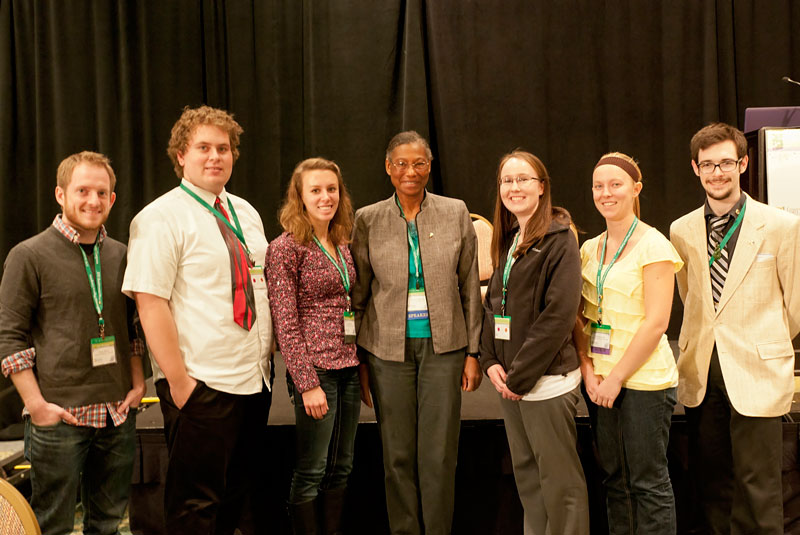Chandeliers and Space Gas
Fall
2012
Special Feature
Chandeliers and Space Gas
Mercedes Richards Sees the Universe in 3D
By:Katrina Hanson and Theodore McDonough, University of Wisconsin–River Falls

What do chandeliers and extraterrestrial bodies have in common? Both are objects of interest for Mercedes Richards, whose childhood fascination with her neighbor’s illuminated fixtures was a mere antecedent to her now-preeminent knowledge of binary star systems and the gas flows between those stars. The Penn State Department of Physics and Astronomy professor joined us in Orlando, FL, as one of PhysCon’s noteworthy plenary speakers.
As Richards presented her talk, “The Incredible Tomography Imaging Technique,” it became evident that both her topic and the woman herself truly embody the 2012 congress theme: “Connecting Worlds.” A Jamaican native, Richards completed her undergraduate work at the University of the West Indies. She then traveled to England to earn her master’s degree from York University, before completing her doctoral requirements at the University of Toronto. She is a living example of the importance of promoting diversity in science.
Her technique of choice, tomography, is itself a tool for connecting and communicating. This approach to imaging pieces together two-dimensional projections to create 3D images. Humans already use a form of tomography in their everyday lives, Richards pointed out. When we see the shadow of a wolf on a tent wall while camping, our brains conjure up the animal’s real-space stature. We immediately identify the flat shadow as a projection of the fully fleshed-out being. Science has adapted and advanced this natural survival skill into a relevant and useful imaging method.
The intrinsic value of tomography is being realized through major applications in the fields of medicine, oceanography, geophysics, archaeology, and even art. The healthcare industry relies on tomographic technology every time a CAT (computed axial tomography) or MRI (magnetic resonance imaging) scan is ordered. Similarly, artist Louis Tiffany incorporates layers of stained glass into his pieces to create a three-dimensional effect. Seismic tomography applies tomography to primary and secondary waves moving through Earth to scan the center of the planet which cannot be reached. Radar (radio detection and ranging) and Sonar (sound navigation and ranging) are critical imaging techniques that provide the means for using tomography to map geological and oceanic Earth and even led to the rediscovery of the sunken Titanic.
Now Richards and other scientists are applying the far-reaching abilities of tomography to yet another field: astrophysics. Aristotle’s rationalization of Earth’s spherical shape, based on the projection of its curved shadow on the moon’s surface, can be considered an early application of tomography. Nevertheless, astronomy is considered to be one of the last scientific disciplines to realize the imaging technique’s full modern usefulness. Despite its belated introduction, tomography has now become a staple within astrophysics’ technological arsenal.
Richards uses Doppler tomographical imaging to study binary stars. About 70 percent of stars that appear to be single are actually binary or multiple star systems. Stars in such systems transfer gas from one to the other, typically forming rings of gas around recipient stars.
When white-dwarf stars lose their ring of gas, tomography can produce three-dimensional images of the gas. The orbital motion of the stars leads to cyclic Doppler shifts in their spectra. This characteristic allows scientists to obtain views of a star from a vast range of angles and superimpose these projections into a representative figure. Richards initiated the use of this technique when she collaborated with Russian scientists to produce the first three-dimensional velocity images of magnetically threaded gas streams. This application of tomography is truly incredible, as the name of her plenary talk suggests.
After Richards' presentation, we shared a meal with her. She was very accommodating in our requests for material, and her willingness to work with students was encouraging. The conference brimmed with inspiring moments and learning opportunities, but it was Richards who truly embodied the heart of PhysCon’s motto. Not only does she connect worlds, she gives the next generation of scientists the courage to be fascinated with its own personal “chandeliers.” //
